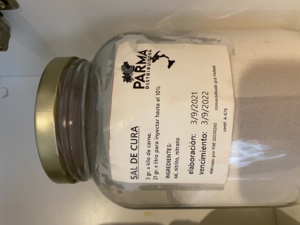So, I've got a question!
So. I have retried this experiment and found myself with yet another question
I've had like 8kg of meat in the brine for 11 days, so today I changed the brine.
on the first brine I used 40 gr of curing salt n2 (three to four tablespoons) on 7 liters of water and 8kg meat distributed in 3 cuts of different sizes (15kg total)
I wanna push the meat (2 out of the three pieces at least) to 20 days by making a new brine and letting it sit for another 9 days while I eat the remaining one tommorrow
on the second brine I should use curing salt too. right?
I prepared the new brine with 7 ltrs of water and this time I used 25 gr of curing salt on the brine. is this ok? or I'd be using too much cure n2? I use n2 because it's the only available at my home country!
thanks so much! right now as a precaution I've not put the meat into the brine and one piece is desalinating in cold water and the others are dry resting
So. I have retried this experiment and found myself with yet another question
I've had like 8kg of meat in the brine for 11 days, so today I changed the brine.
on the first brine I used 40 gr of curing salt n2 (three to four tablespoons) on 7 liters of water and 8kg meat distributed in 3 cuts of different sizes (15kg total)
I wanna push the meat (2 out of the three pieces at least) to 20 days by making a new brine and letting it sit for another 9 days while I eat the remaining one tommorrow
on the second brine I should use curing salt too. right?
I prepared the new brine with 7 ltrs of water and this time I used 25 gr of curing salt on the brine. is this ok? or I'd be using too much cure n2? I use n2 because it's the only available at my home country!
thanks so much! right now as a precaution I've not put the meat into the brine and one piece is desalinating in cold water and the others are dry resting






